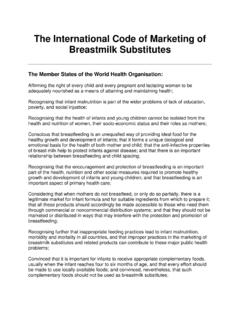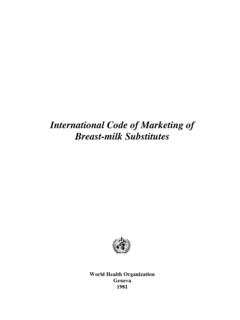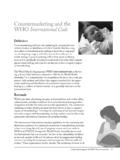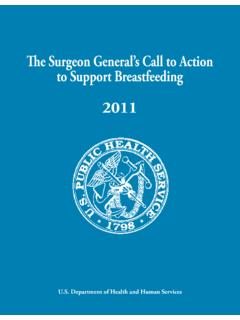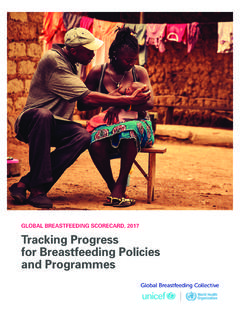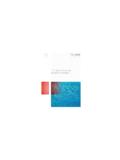Transcription of REVERSE PRESSURE SOFTENING K. Jean Cotterman …
1 REVERSE PRESSURE SOFTENING K. Jean Cotterman RNC-E, IBCLC, (This may be used as a two-sided, thorough instruction sheet, or as a one-sided basic how-to instruction sheet) What is REVERSE PRESSURE SOFTENING ? It s a new way to soften the a-re-o-la (the circle around your nipple ) to make latching and removing your milk easy while your baby and you are learning. LATCHING SHOULD NOT BE PAINFUL. This new method is not the same as removing milk with your fingers. Don t expect milk to come from your nipple each time. But it s OK if some milk does come out. Why does REVERSE PRESSURE SOFTENING work? Early swelling, firmness or fullness may be only partly due to milk.
2 Some swelling may be from extra fluid stored (retained) in the spongy, protective tissue around your milk ducts. (This extra fluid can never go to your baby.) Delayed milk removal often leads later to retained tissue fluid. Frequent, regular removal of small amounts of early milk is best. Intravenous (IV) fluids, or drugs such as pitocin may often cause early, extra retained tissue fluid, sometimes taking 7-14 days to go away. REVERSE PRESSURE SOFTENING briefly moves mild or firmer swelling away from under your areola, slightly backward into your breast for a short period of 5-10 minutes. This allows your areola to change shape very easily, and makes latching easier.
3 The softened areola helps your nipple extend more deeply into baby s mouth. REVERSE PRESSURE SOFTENING also causes a let-down reflex. (This signals your breasts to quickly release more milk forward, so baby s tongue can reach it.) A soft areola also makes it easier to remove milk with fingertips or with SHORT PERIODS OF SLOW GENTLE PUMPING. If you need to remove milk for your baby with fingertips or pump, use REVERSE PRESSURE SOFTENING , whenever needed. You may also gently massage milk forward in the breast. Avoid long pumping sessions and high vacuum settings on breast pumps to avoid movement of extra retained tissue fluid into the areola and nipple.
4 When is REVERSE PRESSURE SOFTENING helpful? In the first weeks, for firmness of the areola, latch problems or breast swelling. At any time, to get a let-down reflex, before or while pumping. Feel your areola and the tissue deeper inside it. Is it soft and easy to squeeze, like your earlobe or your lip? If not, it s time to try REVERSE PRESSURE SOFTENING each time just before your baby wants your breast. (Some mothers soften their areola before each feeding, for a week or longer, till swelling goes down, latching is deep and easy, and milk is flowing well. REVERSE PRESSURE SOFTENING SHOULD CAUSE NO DISCOMFORT.)
5 (Over) (CAUTION-NEVER TO BE USED FOR MASTITIS, PLUGGED DUCTS OR ABCESS) How to do REVERSE PRESSURE SOFTENING -developed by K. Jean Cotterman RNC-E, IBCLC Try this if pain, swelling, or fullness create problems during the early weeks of learning to breastfeed.
6 The key is making the areola very soft right around the base of the nipple, for better latching. A softer areola helps baby s tongue remove more milk, while being very gentle to your nipple. Mothers say curved fingers work best. (Fig. 1 or 2) Ask someone to show you if needed Press inward toward the chest wall, counting slowly to 50; count very slowly if very swollen. Moms with very swollen breasts get more relief lying on their back, (using gravity.) This delays return of swelling to the areola, giving more time to latch. (For long fingernails, try another way shown below.). If mom wishes, someone else may help, using thumbs (Fig.)
7 5). Soften the areola right before each feeding (or pumping) till swelling goes away. For some mothers, this takes 2-4 days or more. Make any pumping sessions short, with pauses to re-soften the areola if needed. Use medium or low vacuum, to reduce the return of swelling into the areola. Fig. 3 You may ask someone to help press by placing fingers or thumbs on top of yours Fig. 1 One handed flower hold : Fingernails short, Fingertips curved, placed where baby s tongue will go Fig.
8 2 Two handed, one-step method: Fingernails short, Fingertips curved, each one touching the side of the nipple Fig. 4 Two step method, two hands: using 2 or 3 straight fingers each side, first knuckles touching nipple. Move turn, repeat above & below nipple Fig. 5 Two step method, two hands: using straight thumbs, base of thumbnail at side of nipple. Move turn, repeat, thumbs above & below nipple Fig. 6 Soft ring method: Cut off bottom half of an artificial nipple to place on areola to press with fingers Illustrations by Kyle Cotterman , REVERSE PRESSURE SOFTENING by K. Jean Cotterman 2010 This handout may be copied and distributed without further permission, on the condition that it is not used in any context violating The international WHO code on the marketing of Breastmilk substitutes
